Making the Case: Should Emory Jones Start at QB for Florida in 2020?
Emory Jones, the former four-star recruit from LaGrange, Georgia has been waiting for his turn the past two years since he enrolled at Florida and has shown flashes of excellence in his minimal time on the field.
Patience has been practiced by Jones and he is well aware of Dan Mullen's plan to put him in the best position, both for him and the team.
After the 36-28 victory in the Orange Bowl, Jones discussed his season in review with GatorMaven, stating: "The main thing I’d say I’ve learned is just, I just know I’m ready."
Jones' potential is through the roof and what he can bring to Mullen's offense is something we haven't seen at Florida in a while. With what little time he has gotten, Jones has made the most of it, especially in the run game.
In 2019, Jones rushed for 256 yards on 42 attempts, which was good enough to finish as the third highest rusher on the team, only following running backs Lamical Perine and Dameon Pierce. Jones' mid 4.6 speed is hard to stop, especially with his ability to make defenders miss. Jones also rushed for four touchdowns, averaging 6.1 yards a carry.
Through the air, Jones finished his redshirt freshman season by completing 25 of his 38 passes (65.8%) for 267 yards, three touchdowns, and zero interceptions.
The 6-2, 199-pound quarterback from LaGrange, Georgia has been working in the shadows since he arrived in Gainesville, spending many late nights in the indoor practice facility and meeting with QB groups, such as the newly created Black Quarterback Summit, which meets in Atlanta. He's notably been taking processing advice from Houston Texans QB and two-time Heisman nominee Deshaun Watson.
This entire system is catered to a dual-threat quarterback, and it's no secret that Mullen would prefer someone who can do it all behind the center - hence why Feleipe Franks maintained the starting job, while Kyle Trask was inarguably an upgrade as a passer.
At the same time, Trask plays with a smart arm and can most of the throws he is asked to make. Jones hasn't gotten the same chance to make all those throws but has capitalized when tasked with doing so.
In my full analysis of both quarterbacks, some responded that Trask played better competition, which is true. However, only 35 of Jones' 130 snaps came against non-P5 opponents (Towson and UT-Martin).
Jones had 21 snaps in the victory over Tennessee, which he finished 4-6 (66.7%) for 20 passing yards and 5 rushing yards on one attempt. The Georgia native had reps in Florida's biggest games this season aside from Georgia, where he only took one snap, rushing for two yards.
Jones accumulated 15 snaps in the Auburn game as he filled in for Trask, when he went down with a knee injury. The following week, Jones took 12 snaps against the national champion LSU Tigers, which he threw an unconventional touchdown to Perine on a crucial fourth and goal.
The rising redshirt sophomore took 14 snaps against the Missouri Tigers on the road, only throwing one pass which was a 48-yard completion to Kadarius Toney. Jones ran for 39 yards on six carries but didn't score against the Tigers.
To finish off the regular season, Jones ended with arguably his best game yet against Florida State, finishing 5-6 (83.3%), throwing for 47 yards and a touchdown. On the ground, Jones added 33 more yards while he averaged 4.7 yards a carry.
Jones didn't attempt a pass in the Orange Bowl in his five snaps, but his presence was felt in the run game, rushing for 32 yards on only four attempts.
Jones brings a new dynamic to the Florida offense and has all the tools around him to be successful. We have seen the infusion of dual-threat quarterbacks throughout college football and even the NFL, a concept that Dan Mullen pushed into the spotlight when he coached Tim Tebow over a decade ago.
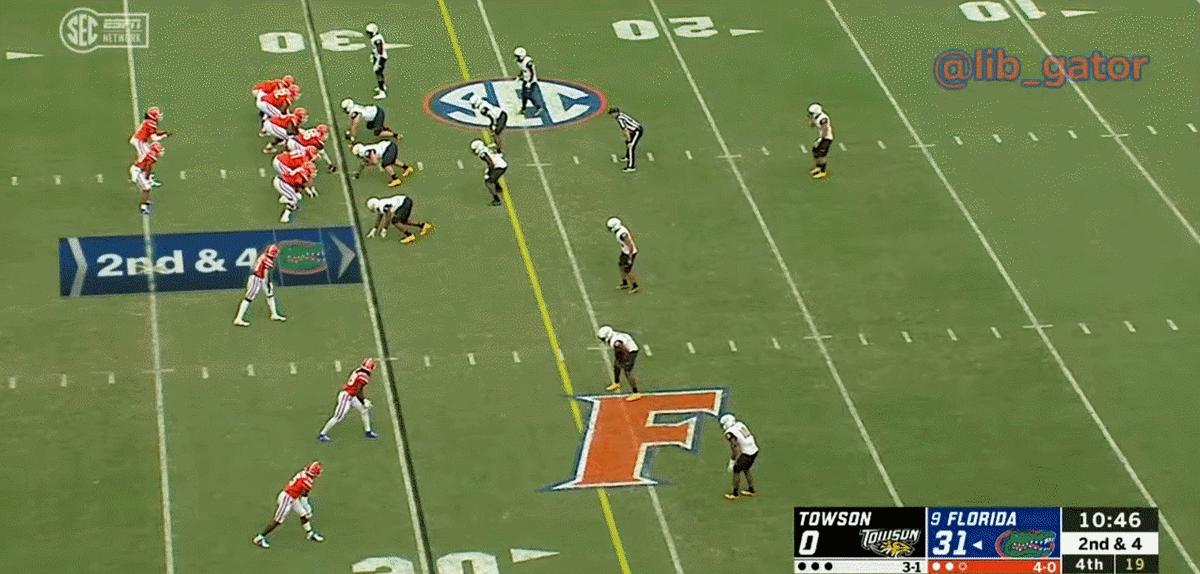
Just look at the quarterbacks in College Football Playoff and you'll find the likes of Justin Fields, Trevor Lawrence, Jalen Hurts and Joe Burrow. I'd consider three of these quarterbacks to be dual threats, being Hurts, Fields, and Lawrence.
However, Burrow has the ability to escape the pocket and make plays using his feet as well. Florida fans are more than aware of this as Burrow extended multiple drives against the Gators due to his scrambling ability.
Burrow made play after play escaping from the pocket and launching the ball deep down the field, as he was mobile enough to get out and scramble to make a play. The Heisman winner also took advantage of the lack of linebackers that Clemson played against him, scrambling for 58 yards in the National Championship game, including a 29-yard backbreaker.
Anyway, back to the other three. Each of them ran for over 480 yards this past season, Hurts coming in at 1,298, Lawrence at 563, and Fields at 484, and remember, sacks count against this statistic.
Each of these three broke runs for more than 50 yards, Lawrence's being the most notable as his 67-yard scramble was the play that turned around the national semifinal. Ohio State didn't respect Lawrence's ability to run and it cost them their season.
Hurts is the most notable dual-threat quarterback of the playoff teams, as he accumulated 1,298 rushing yards on top of his 3,851 passing yards. Sure, he played in the Big 12, but still, those numbers are nothing to scoff at. Hurts had five games in which he ran for over 100 yards, four which came against P5 opponents (the last was against Houston). Hurts played lights out in Lincoln Riley's run-pass-option-happy offense and Hurts made the most of the system.
Now, just imagine Jones in Dan Mullen's system with weapons like Dameon Pierce, Kyle Pitts, Trevon Grimes, Jacob Copeland, among many others.
Jones has barely scratched the surface when it comes to him being fully implemented in the whole offense, and if he is on par with Trask in the passing game, that would easily elevate Florida's offense due to his ability to move around the pocket and run the ball.
The running ability of Jones is invaluable and can completely change an offense, much like the other quarterbacks in the playoff. Trask just simply isn't fast or agile enough to make plays with his feet and he struggles to move around the pocket when it collapses.
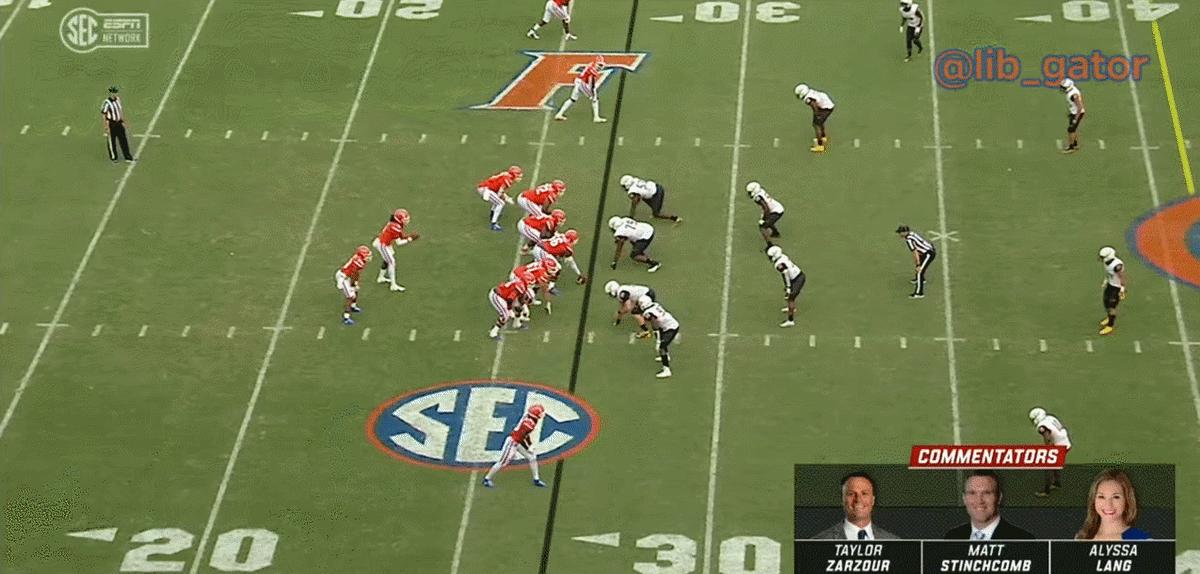
Jones can make most (if not all) of the throws that Trask can make, and PFF stats mentioned in the previous analysis piece that can back that up. Both quarterbacks held similar percentages in every category, whether they were under pressure, blitzed, or if they had a clean pocket.
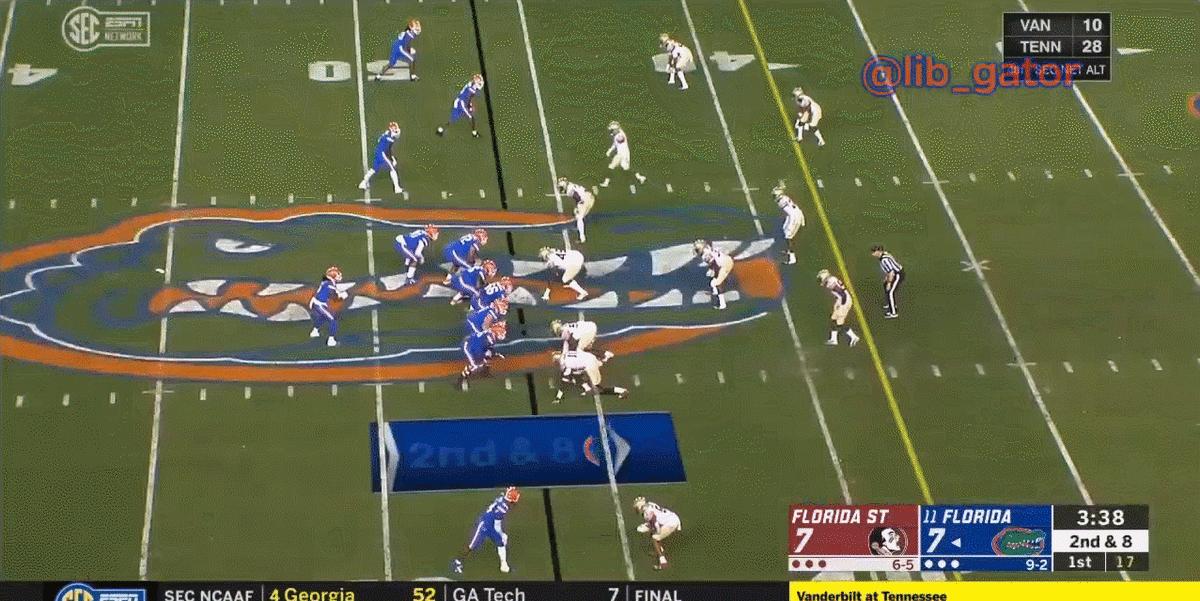
Jones also has also shown awareness in the pocket and has the ability to extend plays with his legs. Compared to Trask, Jones seems much more comfortable in the pocket and does a better job at feeling pressure and adjusting to it to make a play, with his feet or his arm.
With Jones being a run threat, it keeps the defense guessing, which was evident in the Orange Bowl. After Trask delivered a strike to a wide-open receiver in the middle of the field, Mullen brought Jones in and ran an RPO, in which Jones gave the ball up to Perine.
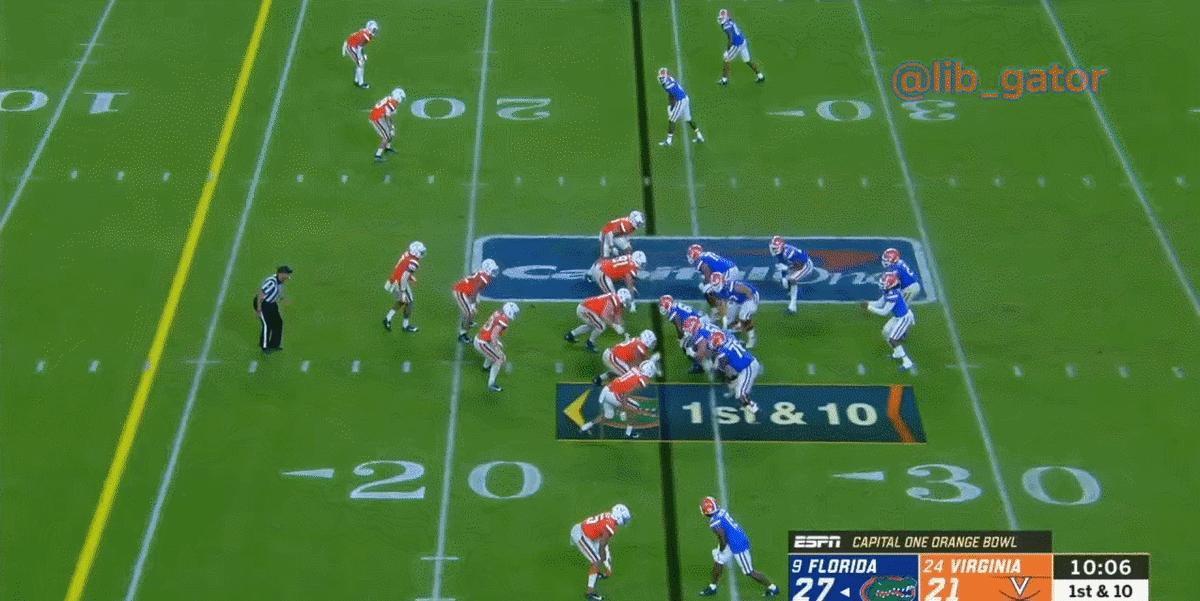
The play design was beautiful, but Jones sells the fake and freezes every single Virginia linebacker, which allows Perine to make a play for the pylon. It's the little things that separate the good from great, and this is something that Jones offers to throw off defenses with his ability to take off with the ball.
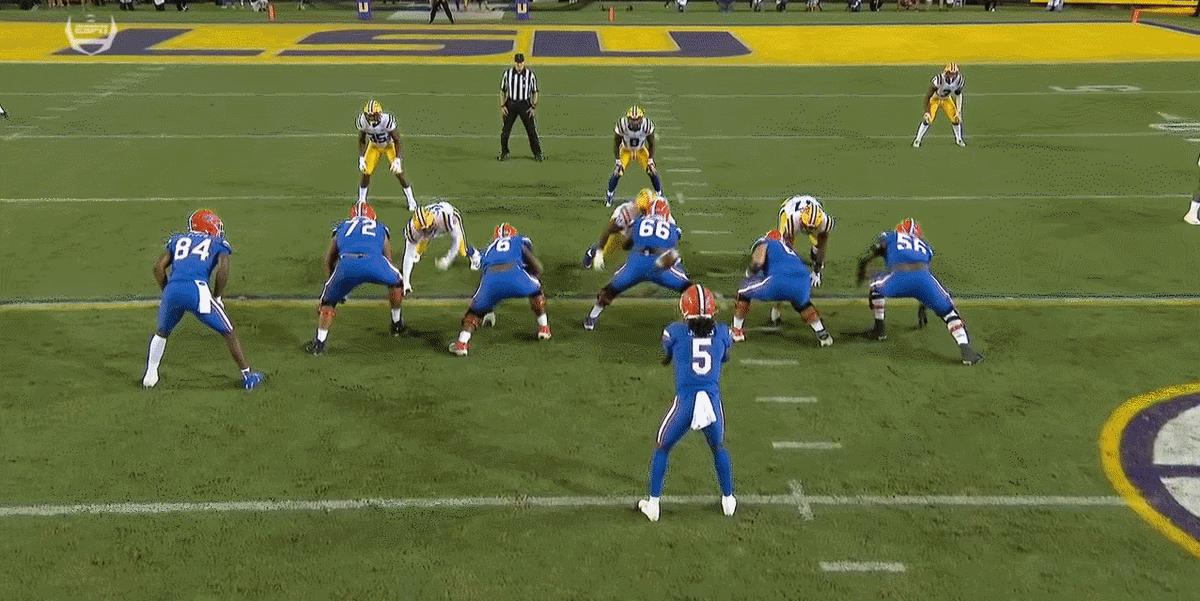
Here it is again, this time in the LSU game. Jones keeps the defense honest with the run fake, which causes the linebacker to come towards the line of scrimmage. Jones delivered a strike to Kyle Pitts, but the winner of this year's Thorpe Award, safety Grant Delpit, makes a better play to break it the pass up before Pitts could come down with it.
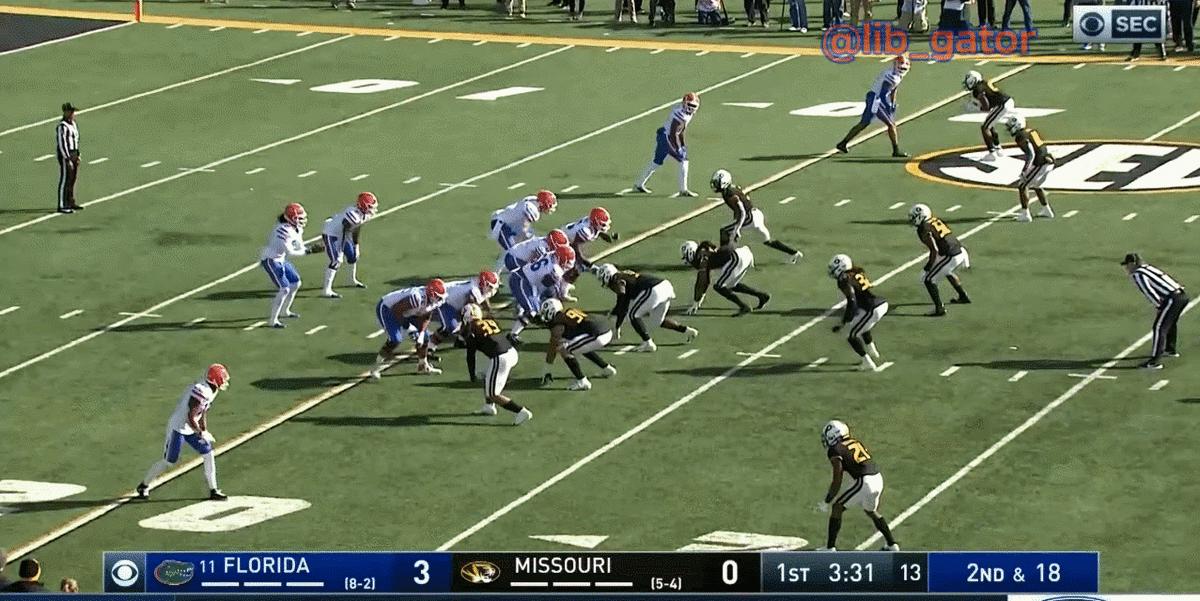
Jones is a force to be reckoned with in the run game, as he can make plays with his quick twitch and top-end speed for his position. Mullen also uses Jones often in short-yardage situations, which proved to be very successful.
One concern about Jones is his smaller frame at 6-2, 199 lbs, as it wouldn't hurt for him to put on some more muscle this offseason. Adding weight would allow Jones to take more hits, which would obviously be the case when he is taking the snaps.
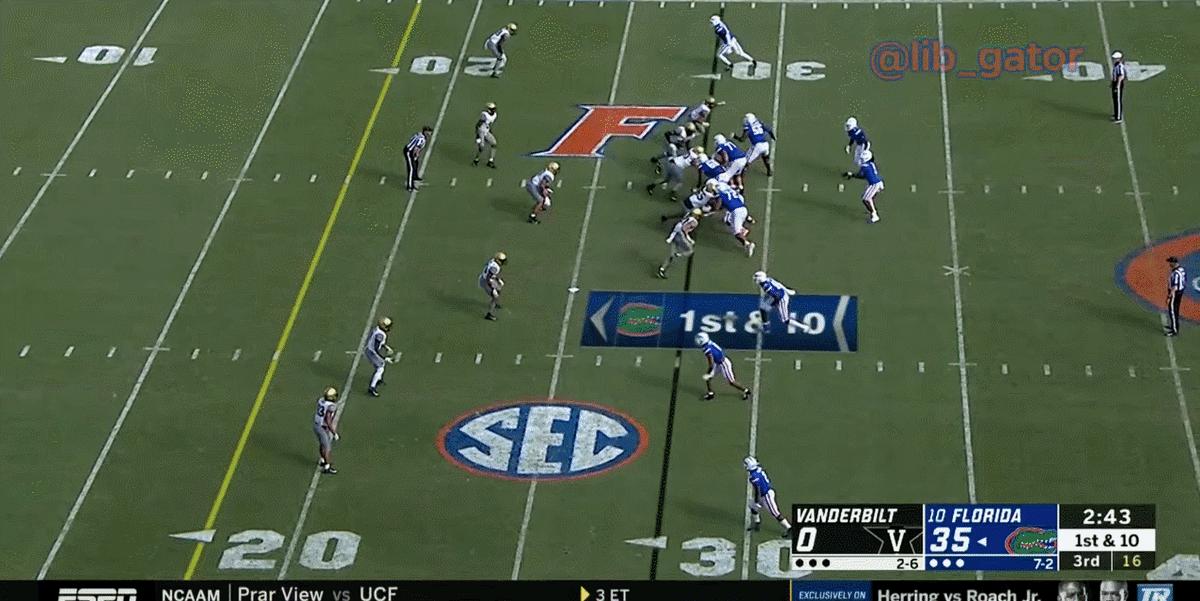
The Orange Bowl showed how often defenders look to tee off on the defenseless quarterback, as he took many hits, one which caused him to leave the game. He could also look to slide more often, which would limit the number of shots he takes over the course of the game. It wouldn't hurt to add a few pounds, especially when 300+ pound defensive linemen are falling on you every few plays.
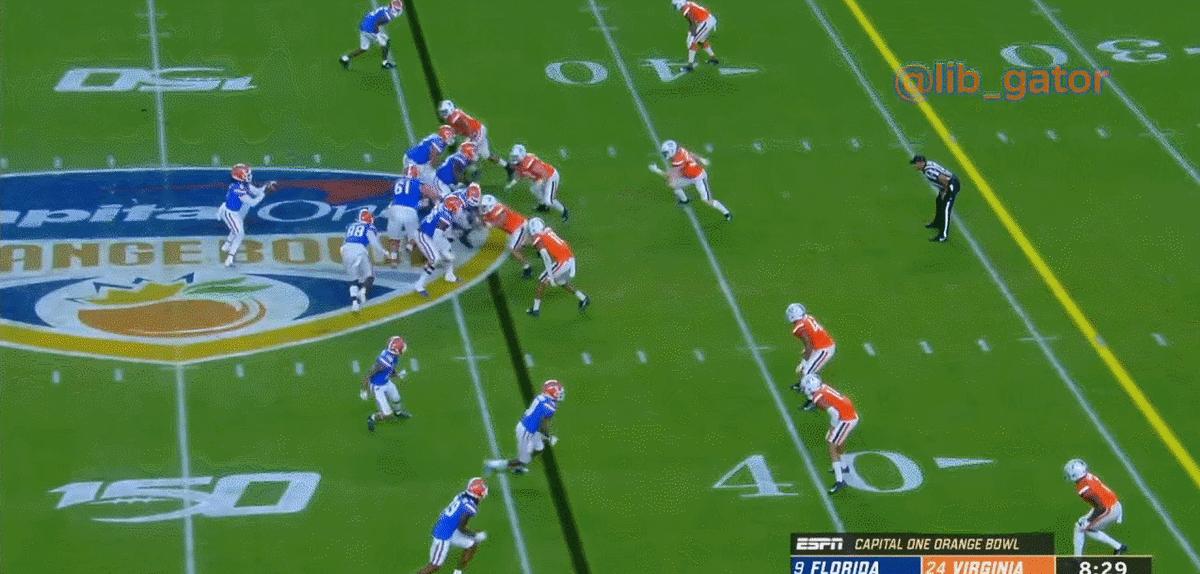
Another criticism of Jones is his deep ball, which hasn't been on display much since he has been at Florida. Although Mullen hasn't recently relied on taking deep shots consistently, it never hurts to have a vertical threat, especially when you have able wide receivers.
Still, Florida has proven they'll be just fine by depending on the short and intermediate passing games first.
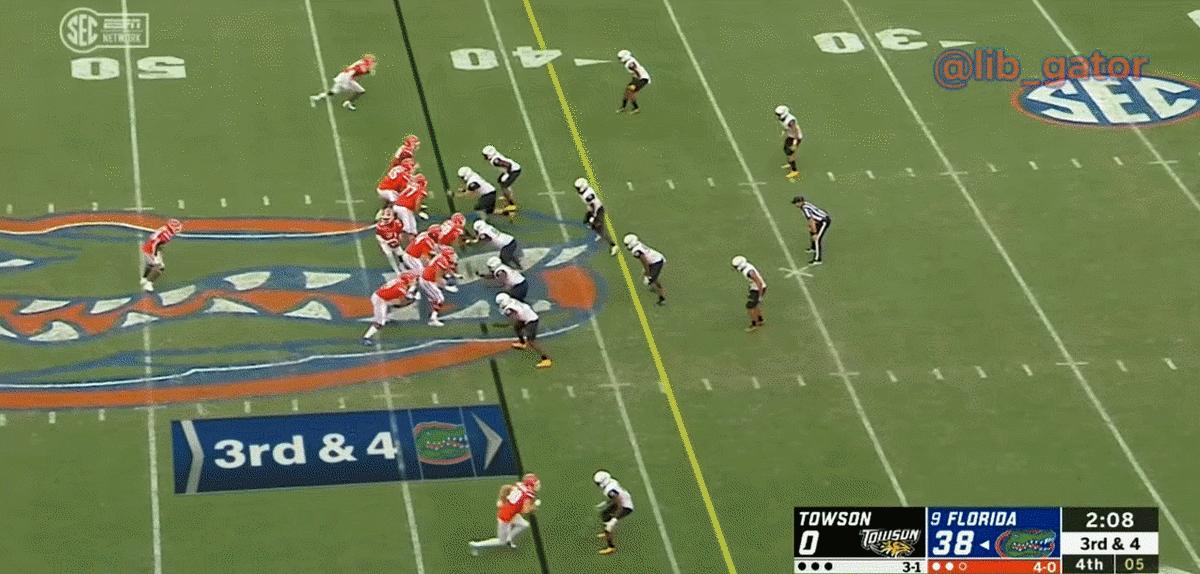
When Dan Mullen was asked what he needed to see from Jones moving forward, Mullen responded with this:
“His biggest thing that we always talk about with him, and he knows this, is just consistency... Consistently making unspectacular plays. He can make spectacular ones. But consistently make the easy, unspectacular play. I think that is always a learning curve, especially for younger guys. ‘Coach, did you see this spectacular play?’ ‘I did. Absolutely, I saw it. It was unbelievable.’ 'Right?' 'But what about this little simple one here?'"
As Mullen said, this will come with time. Mullen won't rush his development, especially when Trask is performing at the level he has been.
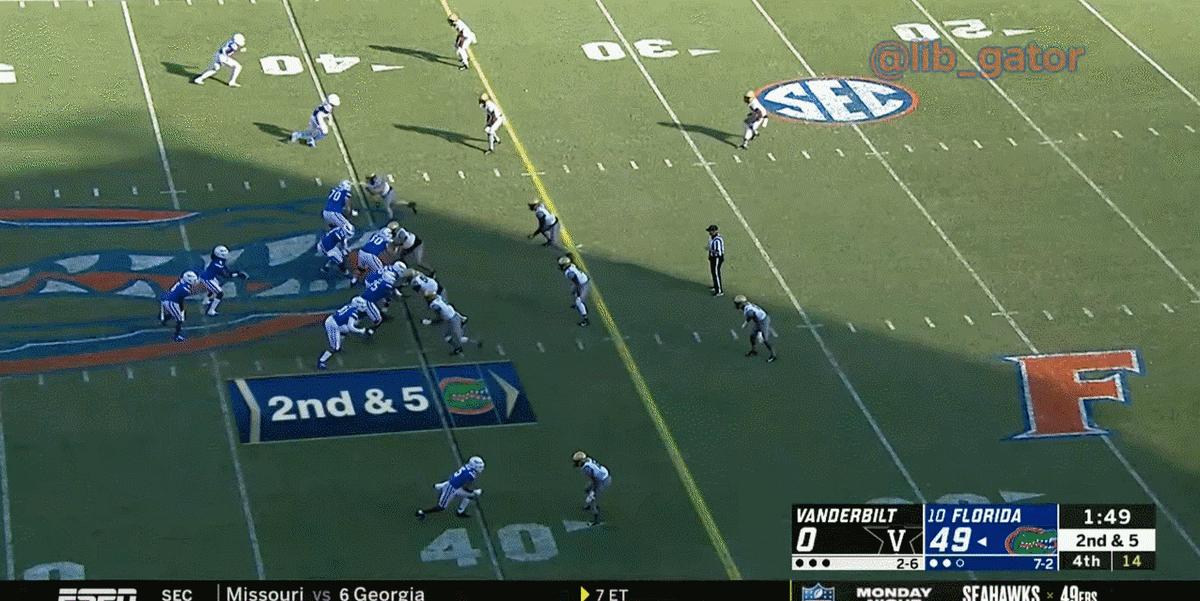
Conclusion
Is Jones the better fit for Dan Mullen's system? Yes, absolutely.
Does Jones have the skillset to uproot Kyle Trask as the starter? Yes.
Will Jones be the starter for the 2020 season? Probably Not. And here's why.
The number one thing that Trask has that Jones doesn't is the experience. Trask walked into Death Valley at night and threw a near-perfect game until he ultimately threw a red zone interception to Derek Stingley.
Trask is a guy that gets the job done well, but won't take your team to the next level. Jones has a higher ceiling, but Kyle Trask has a higher floor, which is vital in a season as important as this one is for the Gators. It makes sense to stay with your experienced quarterback, which is the route we most likely see Mullen take in 2020.
Even if Trask still continues to start in 2020, Gator fans will itch to see more of Jones in the offense. We could also see Mullen take a different approach by splitting reps, a concept Mullen is no stranger to, as he did it with Chris Leak and Tebow.
Still, if Jones were to beat out Trask, it would require tremendous improvement from his play in 2019. The redshirt sophomore is willing to put in the overtime and he hasn't left the practice field since the curtain closed after the Orange Bowl.
It's proven that Jones wants the job and will do the most to win it, but the question is if he will be able to do enough to uproot a comfortable Trask for the starting role.
